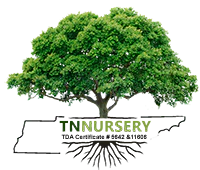Pennsylvania sedge is a native perennial grass that grows in clumps and forms mats. It reaches 1 to 2 feet tall and spreads by rhizomes to form colonies.
How Do You Take Care Of Pennsylvania Sedge?
Pennsylvania sedge is easy to grow from seed once established in your garden. Once established, it only requires occasional watering during droughts if needed.
How Much Sunlight Can Pennsylvania Sedge Take?
Pennsylvania Sedge can tolerate full sun to partial shade but prefers partial or complete shade. It will grow best in dappled light or even deep shade. In full sun, this plant may burn in high temperatures.
Does Pennsylvania Sedge Back Up Every Year
Pennsylvania Sedge does not back up yearly because it produces rhizomes (underground stems) that form new plants from below ground level each year. These rhizomes may spread over large areas if left unchecked, so look for them when removing this plant from your yard or garden bed.
What Does Pennsylvania Sedge Look Like?
Pennsylvania Sedge has very low-growing leaves that are triangular shaped with pointed tips and grow up to 2 feet tall depending on how much sunlight they receive and how often they are watered during dry spells.
Where Does Pennsylvania Sedge Grow?
Pennsylvania sedge is native to temperate regions of North America. It can be found throughout the United States, as well as in parts of Canada and Mexico.
What Are The Environments In Which Pennsylvania Sedge Grows?
Pennsylvania sedge grows in open or moist woods with
total sun exposure to partial shade conditions. It can tolerate acidic soils but prefers neutral or slightly alkaline soils with good drainage.
Is Pennsylvania Sedge Toxic?
Pennsylvania sedge (Carex Pensylvanica) is not poisonous. But if you ingest it, it may cause nausea, vomiting, and diarrhea.
How to Grow Pennsylvania Sedge
You can grow Pennsylvania sedge from seed or cuttings. You should plant your seeds in early spring or late fall if you live in a warm climate where they won't be killed by frost or freeze before they have time to germinate. In colder climates, they can be planted anytime between fall and early spring. Seeds will take two weeks and three months to germinate, depending on how cold it is outside when you plant them (and how old your seed packets are).
How Do You Care For Pennsylvania Sedge?
Pennsylvania sedge is relatively easy to care for in the garden. It will do best in moist soil, and partial shade but will tolerate dry soil and full sunlight. To help avoid problems with pests and diseases, remove any dead foliage from your Pennsylvania sedge patch after it dies back in fall or winter.
How Did Pennsylvania Sedge Get its Name?
Pennsylvania sedge was named for its native habitat along the banks of rivers throughout much of Pennsylvania and Ohio in the United States.




















































